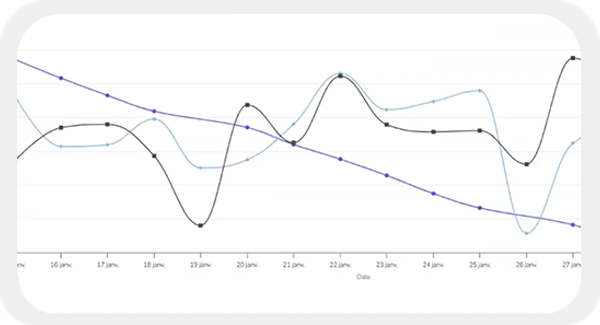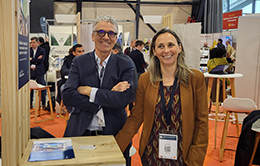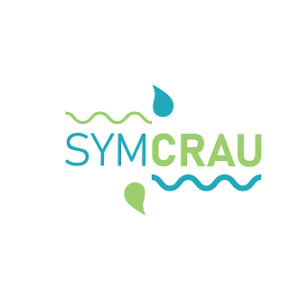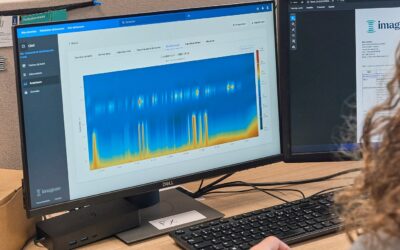Integrated solution for managing the salt wedge
Monitor the position and evolution of the salt wedge in real time
Monitor groundwater quality in real time and keep an eye on saltwater intrusion using SMD, a patented electrical investigation method dedicated to saltwater intrusion monitoring.
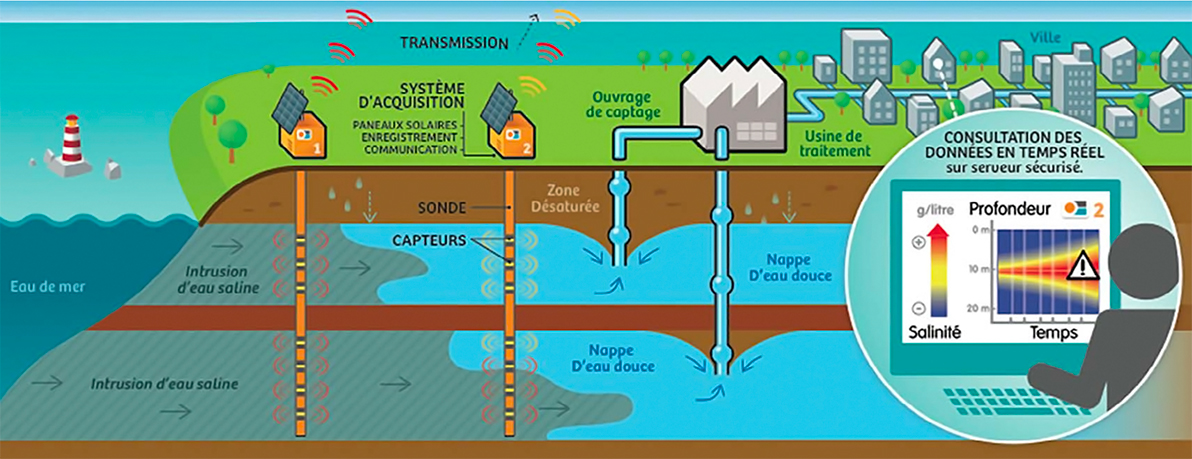
Optimised management of salt intrusion
We have developed an innovative solution for monitoring, analysing and anticipating salt intrusion. An approach tailored to the challenges of sustainable management of water resources.
01.
Continuous monitoring strategy
A continuous monitoring strategy based on an understanding of the initial problem
02.
Dedicated monitoring installation
A dedicated high frequency temporal and/or spatial monitoring facility (SMD)
03.
Access to EMI software data
Access to data and
data interpretation (EMI)
04.
Cross-referencing with geochemical data
05.
Calculation of salinity index
Analysis and cross-referencing of data to calculate salinity indicators
06.
Integration of predictive models with AI
Integration of predictive models.
GDS features
- Representative of the phenomenon observed
Vertical discretisation (up to 60 measurement points): representative of the phenomenon observed - Adaptability to ground constraints
Linear adaptation (up to 300 m in length or depth) - Multi-parameter monitoring
Possibility of multi-parameter measurements (resistivity, pressure, temperature) - Customisation of sensor mesh
Adjust sensor density to suit areas to be monitored - Measurement flexibility
Modular measurement frequency; - Autonomy and responsiveness
Autonomous, continuous measurement and alert system
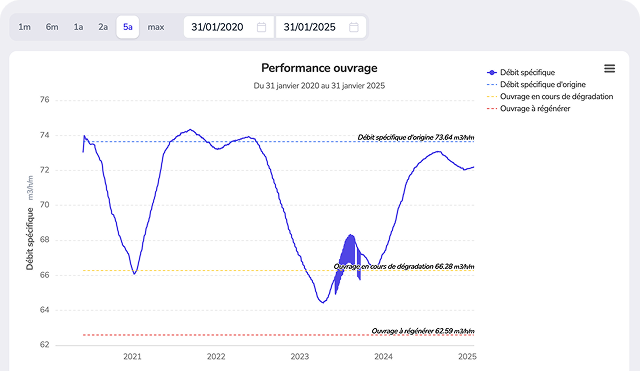
Salt wedge: the benefits and savings of our solution
Explore the potential of your data with our continuous measurement and analysis systems. This information is used as a basis for deploying control and management actions for :
Sustainable use of resources
- Preserving resources while limiting the risk of saltwater intrusion
Monitoring salt plumes
- Detection and monitoring of migration for proactive management
Decision support for pumping
- Optimisation of restrictions to limit treatment and corrosion
Managing operating volumes
- Anticipating risks to avoid costly investments
Continuous data analysis
- Measurement and interpretation for effective management
Infrastructure optimisation
- Support for strategic decisions, from renewal of the DUP to network management
Monitoring the salt-water wedge: key figures
They talk about it better than we do
Our customers rely on the SMD solution to exploit coastal aquifers sustainably
A simple exchange can change everything.
Salt intrusion: Frequently asked questions
SMD: Monitoring groundwater salinisation
Regular monitoring campaigns and analysis of hydrogeological data help to identify areas at risk. Our SMD Intrusion tool is specially designed for this precise monitoring.
imaGeau’s involvement extends from upstream (problem analysis) to downstream (proposals and recommendations for long-term management of the resources affected by these phenomena).
Between these two stages, a series of controlled actions are put in place:
1/ State of the art – Summary of the existing situation (bibliography, summary of existing measures)
2/ continuous monitoring strategy based on an understanding of the initial problem
- dedicated high-frequency temporal and/or spatial monitoring system (SMD)
- data access and interpretation (EMI)
- spatial interpretation
- cross-referencing with geochemical analysis data
- Modelling
3/ Analysing and cross-referencing data to calculate salinity indicators
4/ Integration of predictive models
5/ Recommendations for long-term operation/management
6 / Data management (export, connection to local system) to ensure long-term monitoring and follow-up
This approach enables a precise diagnosis of the local situation, predictive modelling to anticipate the evolution of the phenomenon and real-time monitoring of hydrogeological parameters for proactive management.
It reduces the availability of a high-quality freshwater resource, increasing treatment costs and sometimes forcing people to seek alternative sources of supply.
They are mainly due to :
- Overexploitation of groundwater, which reduces the pressure of freshwater and allows saltwater to advance.
- Rising sea levels linked to climate change.
- The migration of chlorides into river estuaries and then into the water table during high tides or low river flows.
- The drying up of coastalwetlands, which used to act as a buffer.
- Drilling or infrastructurework that alters the hydraulic balance.
- An increase in salinity (or in measured electrical conductivity, a parameter that is proportional to salinity) in monitoring piezometer networks and in the water extracted from drinking water or irrigation wells.
- Lower agricultural yields due to soil salinisation.
- Changes in the biodiversity of wetlands and coastal rivers.
Assistance can be obtained from the Agence de l’Eau, the Ademe, the regions and European funds (FEDER, LIFE).
Support from imaGeau’s water resource management experts can also make it easier to put together applications. Contact imaGeau
Before preventive measures can be recommended, the origin, dynamics and factors influencing salt intrusion need to be fully understood.
The implementation of SMDs is accompanied by an assessment of the data acquired at high frequency in order to evaluate these different aspects and attempt to give recommendations for limiting saline intrusion: these recommendations may be to reduce pumping rates at certain periods, or even to temporarily stop pumping or to introduce specific pumping protocols.
- Monitoring and modelling: real-time monitoring of water quality to anticipate risks.
- Rational management of withdrawals: limiting excessive pumping from sensitive groundwater.
- Artificial recharging of water tables: injection of fresh water from retention basins or treated effluent.
- Natural solutions: preservation of wetlands and reforestation of dunes to act as a buffer.
- Hydraulic developments: anti-salt dams or reverse pumps.
- Local authorities and water syndicates.
- Water agencies and public bodies.
- Farmers and industries using the resource.
- Specialist consultancies and research laboratories.
